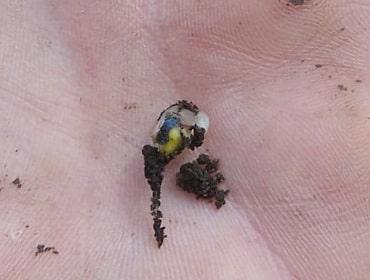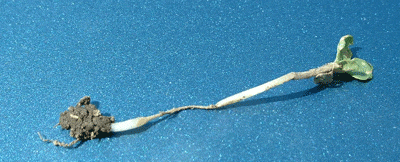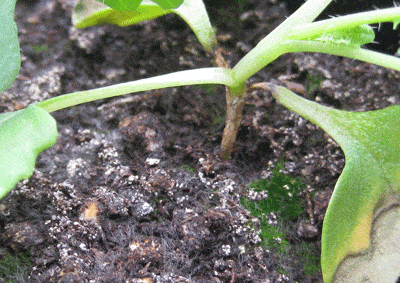


Canola on canola yields less, in general, than canola grown on any other stubble. Reasons for this yield drop could include one or a combination of the following factors:
Disease. Blackleg, clubroot and seedling diseases become more intense with tighter rotations. The sleeper disease here could be seedling disease caused by rhizoctonia, pythium and fusarium. Observations across the Prairies suggest that canola seedling diseases are getting worse with tight rotations. Scout early in the season, and look closely for rotten seed and seedlings in areas with low plant populations. Differentiating between plant losses from seedling disease versus other causes like cutworm damage requires close inspection of the roots and hypocotyls of affected plants before they are too decayed to determine the cause. If the problem is seed rots and seedling disease, there’s no sense spending a bunch of money on insecticide.
Insects. Root maggots are one pest that can get worse — and in some cases, much worse — in a field with continuous canola. There are no insecticides available to control root maggot in canola, but rotation does work. A one year break between canola crops could be enough. As for other insects such as flea beetles, more intense canola rotations do promote higher numbers, especially if the insect is capable of overwintering.
Fertility. Recent research by AAFC indicates that hybrid canola removes as much soil nitrate as wheat, and therefore high yields in tight rotations with canola and wheat will results in low soil nitrate levels. Fertilizer rates may need to rise in response to more intensive canola rotations when high yields are being achieved.
Moisture. High yielding canola uses a lot of moisture in the first two to three feet of topsoil. In years when that moisture is not replenished, canola seeded after high yielding canola (or even after wheat) will have lower yield potential.
Weeds. Canola volunteers and other weeds not controlled easily in canola will become worse in a tight rotation. These weeds in particular will require a concerted control effort in rotation crops. Tight canola rotations and a limited spectrum of herbicide groups that dominate most canola acres means increased likelihood of finding resistant biotypes and allowing them to increase in number within the field.
Diversity is key. With an intensive canola rotation, growers have to look at whatever other means they have to introduce pest management diversity into their systems. With an intensive canola rotation, the level of scouting needs to go up significantly. Weed, insect and disease problems will get more intense.
Click on the video below to see Alberta oilseed specialist Murray Hartman give his take on rotation. Thanks to Real Agriculture and ACPC for this video.
